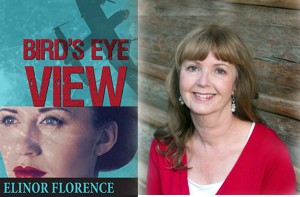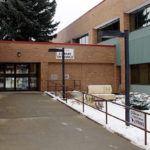Home »

How Canadian kids helped the war effort
By Elinor Florence

Toyland joins the war. Patsy Ann McHugh, as a nurse, bandages the hand of a “wounded aviator”, Bobby O’Connor, using a nurse’s kit during a demonstration by toy manufacturers in New York. 1942
When the Second World War raged around the planet, how were children protected from the horrors? The short answer: they weren’t. Canadian kids were fully involved in the war effort, doing whatever their little hearts and hands could manage.
Many kids who grew up during the war were too young to fight, but they still wanted to do their bit. Their enthusiasm turned them into valuable assets.
Schools, churches, and other organizations harnessed all that youthful energy and put it to work.
Recycling
Kids were good at scavenging. Encouraged by their parents and teachers, plus incentives such as free passes to movies, kids collected tons of metal, paper, rubber, and grease.
These materials were in short supply and were recycled into useful products. Some even donated their own toys for metal salvage drives.
 (Another advantage of all this scavenging was that our streets and roadsides never looked so tidy, stripped of bottles, cans and other garbage).
(Another advantage of all this scavenging was that our streets and roadsides never looked so tidy, stripped of bottles, cans and other garbage).
My uncle Jim Light of Battleford, Saskatchewan, collected rubber bands and rolled it into a giant ball. How I wish someone had taken a photograph of him with his giant rubber globe!
Boy Scouts and Girl Guides were particularly active. For example, the Tenth Toronto Scout Troop collected 510,000 pounds of salvage and used the money to buy both a truck and an ambulance for the Royal Canadian Air Force.
 These two boys in Montreal (above right) were photographed in April 1942, collecting collect rubber tires and boots to be recycled as part of Canada’s war effort.
These two boys in Montreal (above right) were photographed in April 1942, collecting collect rubber tires and boots to be recycled as part of Canada’s war effort.
The government coerced kids into emptying their piggy banks. Children used their pocket money (and in those days, every nickel was hard-earned) to buy War Savings Stamps, which they stuck into special booklets for post-war redemption. A child could buy War Savings Stamps for 25 cents each, and after saving $4 worth of stamps, the child would receive a War Savings Certificate worth $5.
Of the $5.5 billion raised in Victory Loan appeals, literally millions were contributed by children.
Children in all Allied countries went on rations. Our diets in North America weren’t as restricted as those in Britain, but they certainly did without chocolate and ice cream and sugary desserts. (There’s speculation that they were healthier than today’s kids as a result).
This little boy looks proud as punch to receive his Ration Coupon Book.
Because so much food produced in Canada was being sent overseas to the hard-pressed British people, plus millions of fighting men, people plowed up their yards and grew as much fresh food as possible.
Kids were expected to work in their Victory gardens. This was an ideal task for even a small child who could be taught the difference between a weed and a vegetable.
Knitting
Schools and children’s organizations led the way, with knitting taught in many classrooms. Students organized Red Cross sewing rooms and sewed and knit articles for servicemen, civilians in bombed areas, and orphaned British children.
 In this photo from the Canadian War Museum, there is only one girl on the left – the rest are all boys.
In this photo from the Canadian War Museum, there is only one girl on the left – the rest are all boys.
Making useful things
Through their industrial arts classes, the Protestant students of Montreal made 15,000 arm splints for the Red Cross. Even the very youngest students wrote letters to soldiers and made school art projects to be sent overseas to the fighting men for Christmas.
 Forty thousand boys in high schools across Canada worked on the production of scale models of fighting aircraft to be used to train pilots, observers, and gunners in the British Commonwealth Air Training program. This Star Weekly illustration shows a father and son constructing a model airplane.
Forty thousand boys in high schools across Canada worked on the production of scale models of fighting aircraft to be used to train pilots, observers, and gunners in the British Commonwealth Air Training program. This Star Weekly illustration shows a father and son constructing a model airplane.
Working on farms
With most able-bodied men overseas, there weren’t enough farm workers to harvest the crops. Countless young people worked long hours on farms to ensure a steady food supply for Canadians and our Allies.
Many schools didn’t count attendance or introduce new material in classes until after the crops were harvested in the fall. The government lowered the minimum age for obtaining a driver’s licence to 14 years, so that children could legally operate farm trucks and other vehicles. The lead image above shows a group of Girl Guides hard at work on the fall harvest.
Making sacrifices
 To save money, the government barred all non-essential American products from entering Canada, included comic books. The Canadian publishing industry could not afford colour printing, so they published black-and-white comic books, which became known as “Canadian whites.” Canadian comic book heroes included Johnny Canuck, inspiring kids to hate the Nazis even more.
To save money, the government barred all non-essential American products from entering Canada, included comic books. The Canadian publishing industry could not afford colour printing, so they published black-and-white comic books, which became known as “Canadian whites.” Canadian comic book heroes included Johnny Canuck, inspiring kids to hate the Nazis even more.
Bearing Arms
Often children saw themselves as junior soldiers in training. High school students joined militia groups and learned how to march, drill, and fire weapons.
Many Canadian soldiers were just teenagers themselves. About 700,000 Canadians under the age of 21 served in uniform. Sometimes boys as young as 13 would lie about their age. The underage volunteers who looked old enough were often accepted. Many of those who were rejected served in the Merchant Navy, where they transported troops and materials overseas.
 Private Gérard Doré of Quebec is considered the youngest Allied soldier who died on the Western Front in the Second World War, just one month shy of his seventeenth birthday.
Private Gérard Doré of Quebec is considered the youngest Allied soldier who died on the Western Front in the Second World War, just one month shy of his seventeenth birthday.
Born on August 29, 1927, he left home at the age of 15 and enlisted in the Royal Canadian Artillery by lying about his age. He sailed for Britain on May 1, 1944 with the Fusiliers Mont-Royal.
On July 8, one month after D-Day, his regiment landed in Normandy and was sent straight to the front. This brave young lad was killed in action and is buried in the Canadian War Cemetery at Bretteville-sur-Width in Normandy.
Missing their Fathers
 Although they didn’t experience anything so dramatic as the fighting seen and heard by kids all over Europe, Canadian children did suffer from the absence of their fathers.
Although they didn’t experience anything so dramatic as the fighting seen and heard by kids all over Europe, Canadian children did suffer from the absence of their fathers.
“Wait for me, Daddy” is an iconic photograph taken in Vancouver in 1940 by Province newspaper photographer Claude Dettloff. It captured the touching scene of a five-year-old boy named Warren (“Whitey”) Bernard running after his father, Private Jack Bernard, as he marches off to war through the streets of New Westminster, B.C.
A bronze statue based on this classic photograph was commissioned by the City of New Westminster and was unveiled in Hyack Square in October 1, 2014 – 75 years ago to the day the photograph was taken.
 The Royal Canadian Mint issued a series of three coins featuring the same scene, and Canada Post also issued a stamp with the iconic image.
The Royal Canadian Mint issued a series of three coins featuring the same scene, and Canada Post also issued a stamp with the iconic image.
And here’s the happy ending: Warren Bernard was reunited with his father Jack when he returned from the war several years later.
Warren was one of the lucky ones: his father came home. For thousands of other Canadian kids, their lives were altered forever when their fathers, grandfathers and older brothers failed to return from the bloody battle overseas.
– Career journalist Elinor Florence, who now lives in Invermere, has written for daily newspapers and magazines including Reader’s Digest. She writes a regular blog called Wartime Wednesdays, in which she tells true stories of Canadians during World War Two. Married with three grown daughters, her passions are village life, Canadian history, antiques, and old houses. You may read more about Elinor on her website at www.elinorflorence.com.
 Elinor’s first historical novel was recently published by Dundurn Press in Toronto. Bird’s Eye View is the only novel ever written in which the protagonist is a Canadian woman in uniform during World War Two. The heroine Rose Jolliffe is an idealistic Saskatchewan farm girl who joins the Royal Canadian Air Force and becomes an interpreter of aerial photographs. She spies on the enemy from the sky and makes several crucial discoveries. Lonely and homesick, she maintains contact with Canada through letters from the home front. The book is available through any bookstore including Lotus Books in Cranbrook, and also as an ebook from any digital book provider including Amazon, Kindle and Kobo. You can read more about the book by visiting Elinor’s website at www.elinorflorence.com/birdseyeview
Elinor’s first historical novel was recently published by Dundurn Press in Toronto. Bird’s Eye View is the only novel ever written in which the protagonist is a Canadian woman in uniform during World War Two. The heroine Rose Jolliffe is an idealistic Saskatchewan farm girl who joins the Royal Canadian Air Force and becomes an interpreter of aerial photographs. She spies on the enemy from the sky and makes several crucial discoveries. Lonely and homesick, she maintains contact with Canada through letters from the home front. The book is available through any bookstore including Lotus Books in Cranbrook, and also as an ebook from any digital book provider including Amazon, Kindle and Kobo. You can read more about the book by visiting Elinor’s website at www.elinorflorence.com/birdseyeview









